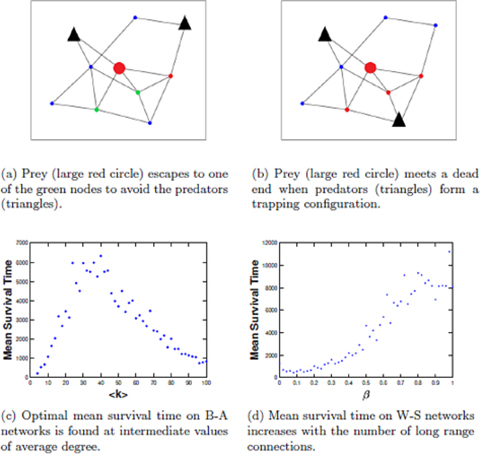https://doi.org/10.1140/epje/i2020-11979-2
Regular Article
Survival probability of a lazy prey on lattices and complex networks
Department of Physical Sciences, Indian Institute of Science Education and Research Kolkata, 741246, Mohanpur, West Bengal, India
* e-mail: pprasanta@iiserkol.ac.in
Received:
31
March
2020
Accepted:
15
July
2020
Published online:
14
August
2020
We develop a framework to analyse the survival probability of a prey following a minimal effort evasion strategy, that is being chased by N predators on finite lattices or complex networks. The predators independently perform random walks if the prey is not within their sighting radius, whereas, the prey only moves when a predator moves onto a node within its sighting radius. We verify the proposed framework on three different finite lattices with periodic boundaries through numerical simulations and find that the survival probability (P sur) decays exponentially with a decay rate proportional to P(N, k) (number of permutations), where k is the minimum number of predators required to capture a prey. We then extend the framework onto complex networks and verify its robustness on the networks generated by the Watts-Strogatz (W-S), Barabási-Albert (B-A) models and a few real-world networks. Our analysis predicts that, for the considered lattices, P sur reduces as the degree of the nodes of the lattice is increased. However, for networks, P sur initially increases with the average degree of the nodes, reaches a maximum, and then decreases. Furthermore, we analyse the effect of the long-range connections in networks on P sur in W-S networks. The proposed framework enables one to study the survival probability of such a prey being hunted by multiple predators on any given structure.
Key words: Living systems: Structure and Function
© EDP Sciences, Società Italiana di Fisica and Springer-Verlag GmbH Germany, part of Springer Nature, 2020





